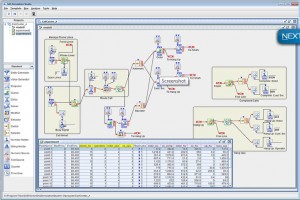The April 2012 issue of ORMS Today contains a piece on "How analytics enhance the guest experience at Walt Disney World," by Pete Buczkowski and Hai Chu. While many of us are used to forecasting just one or two things (such as unit sales or revenue), Pete and Hai illustrate the very many areas where forecasting drives the operational planning at Disney:
- Park attendance -- for strategic planning and setting park hours.
- Guest arrivals at hotels -- for staffing the front desks.
- Costume requirements -- for more than one million garments used by cast members (worn, then laundered and placed back in inventory).
- Attraction wait times -- to manage standby lines and the FASTPASS system.
The Disney labor demand planning system generates forecasts for every 15 minute period at locations throughout the property (including entry turnstiles, restaurants, and merchandise locations). This level of granularity allows the appropriate level of staffing to be available (by location and time period) to ensure guest service standards are met.
The Value of Forecasting: To Make Better Decisions
The article expands upon a point we heard just two weeks ago in Jain and Malehorn's new book Fundamentals of Demand Planning & Forecasting, that "forecasts have no value if they are not accepted and used" (p.300). As Pete and Hai put it, "While accurate forecasting is important, the results are only valuable when utilized to make smarter decisions."
They go on to show how other areas of analytics, such as data mining, optimization, and simulation are used in unique ways. For example:
 Data mining and optimization help understand what vacation packages are most appealing to different types of guests, so that the Disney website and call center agents can offer a more customized vacation planning experience.
Data mining and optimization help understand what vacation packages are most appealing to different types of guests, so that the Disney website and call center agents can offer a more customized vacation planning experience.- Simulation provides a virtual environment for analysis of bottlenecks and capacity in operational settings (like attraction lines, restaurants, and hotel front desks), so impact can be evaluated before doing any physical or process changes.
In Disney's analytical culture, as it should be everywhere forecasting or other analytical methods are used, improvement in decision making is the key. This is more than just some fun mathematical exercise for the analyts. It is applying what we can learn from the analysis to operate more effectively (and profitably), and making our customers happier.

1 Comment
Thanks for this post, Mike. SAS customers get a chance to experience Disney's analytics culture one more time this week during SAS Global Forum. We all appreciate DIsney's professionalism and know it's all about "knowing what's needed and when." Better, faster business decisions will always result in happier guests.